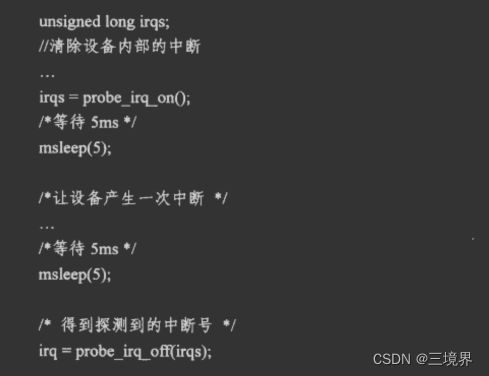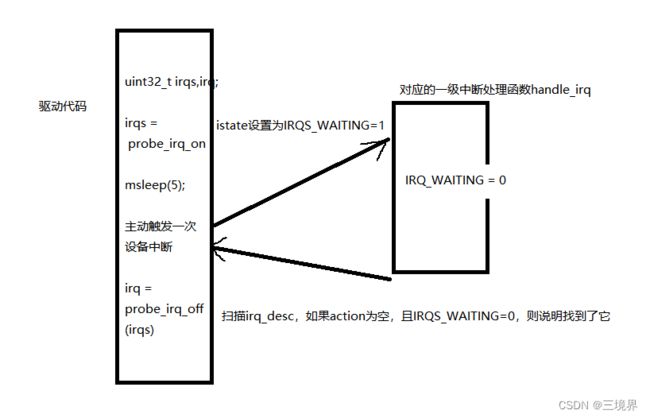- 在新设备上部署Git:完整教程与常见问题分析
马里马里奥-
gitgit容易见的一些问题
在现代软件开发中,Git是必不可少的版本控制工具。无论是个人项目还是团队协作,在新设备上快速部署Git都能提高效率。本博客将提供一份结构清晰的教程,指导你如何在新设备上完成Git部署,并分析部署过程中可能遇到的常见问题。教程基于标准实践,适用于Windows、macOS和Linux系统。让我们一步步来!1.引言Git是一个分布式版本控制系统,用于跟踪代码变更、协作开发。在新设备上部署Git包括安装
- 借助 Wisdom SSH,实现 Linux 用户组与权限的精细化智能管控
qinyia
sshlinux人工智能服务器运维运维开发后端
WisdomSSH(官网ssh.wisdomheart.cn)凭借AI助手,为Linux用户组与权限管理带来智能便捷体验。用户组智能管理按需创建:如输入“为projectX项目建组,含开发、测试、运维人员”,AI助手创“projectX_group”组,生成groupaddprojectX_group命令。权限调整:输入“调projectX_group对代码目录读写,测试报告目录读权限”,AI助手
- 云上游戏服务器架构全解析
你一身傲骨怎能输
架构设计游戏服务器架构
文章摘要本文提出了一套现代化、可落地的云上游戏服务器架构方案,针对FPS、MOBA、MMO等游戏类型的高并发、低延迟需求。该架构采用微服务设计,包含全球接入层、API网关、匹配/大厅服务、对局服务器、业务微服务等组件,通过Kubernetes实现弹性伸缩,支持百万级玩家同时在线。关键技术包括:多地域部署降低延迟、WebSocket/UDP实时通信、帧同步/状态同步机制、Saga分布式事务处理以及完
- 【保姆级】新机器部署Nacos
猫学学
先安装再开始表演java数据库开发语言
1、登录服务器,如果非root用户则切root用户sudosu-2、在/usr/tmp目录上传nacos安装包3、将安装包移到/usr/local/目录mvnacos-server-2.0.3.tar.gz/usr/local/4、解压tar-zxvfnacos-server-2.0.3.tar.gz5、创建nacos数据库,执行官网SQL建库建表cat/usr/local/nacos/conf/
- Linux PXE高效批量网络装机
城南云小白
linux
目录一、PXE概念1.PXE基本概念2.优点3.实现PXE的前提条件4.搭建PXE远程安装服务器二、搭建PXE远程安装服务器1.安装并启用TFTP服务2.安装并启用DHCP服务3.准备Linux内核、初始化镜像文件4.准备PXE引导程序5.安装FTP服务,准备CentOS7安装源6.配置启动菜单文件7.关闭防火墙,验证PXE网络安装三、实现Kickstart无人值守安装1.安装system-con
- 宝塔+fastadmin:给项目添加定时任务+log日志自定义添加
25号底片~
php后端配置(宝塔)php
一、定时任务脚本编写1.使用shebang声明执行器#!/usr/bin/envphp这是Unix/Linux系统中脚本文件的标准开头。表示这个脚本使用系统环境变量中的php来执行。2.定义ThinkPHP入口路径并加载框架define('APP_PATH',__DIR__.'/../../application/');require__DIR__.'/../../thinkphp/start.p
- Centos7.9 使用宝塔部署Python3.12 .0
cceyatao
python宝塔python3.12python项目管理器
使用宝塔安装Python3.12运行之后提示ImportError:Nomodulenamed_ssl,因为服务器有python2.7的项目正在运行,所以需要新建python3.12.0因为CentOS7默认的OpenSSL1.0.x较旧,不满足Python3.12的要求(需要1.1.1或更高)1、安装OpenSSL:CentOS7默认OpenSSL可能较旧(1.0.x)。安装OpenSSL1.1
- 【用户权限】超级用户(二)
超级用户Linux系统中的root账号通常用于系统的维护和管理,对操作系统的所有资源具有所有访问权限在大多数版本的Linux中,都不推荐直接使用root账号登录系统在Linux安装的过程中,系统会自动创建一个用户账号,而这个默认的用户就称为“标准用户”sudosu是substituteuser的缩写,表示使用另一个用户的身份sudo命令用来以其他身份来执行命令,预设的身份为root用户使用sudo
- fastapi使用gunicorn还是uvicorn
程序员的战歌
Pythonfastapi
Uvicorn在单进程上使用异步协程是有优势的,但是如果接口方法是同步的则走的多进程模式,也就是workers的数量,这个时候uvicorn不如gunicorn,性能上会有些限制。uvicornmain:app--host0.0.0.0--port8000--workers4Gunicorn是一个使用WSGI标准的应用服务器。Flask和Django可以直接使用Gunicorn运行,但是FastA
- 小米路由安装frpc
zngw
sshfrp
一、起因家里部署了Nas,在出租屋里直接使用frp访问外网服务器转发的是可以用,但是,流量得多贵啊,还有中间商赚带宽。于是想了一下,在出租屋的路由上部署frp客户端,使用xtcp协议,打洞直连,速度快还不需要流量。二、流程前提条件:一台公网frps服务器家里Nas,已经配置好SMB文件共享(端口445)、WebDav(端口80,可选端口443),其他自行发挥。出租屋解锁SSH的小米路由,我家是小米
- JAVA进阶之路
夜澜听雨声
JavaAdvancejava开发语言
JAVA进阶之路一、Java企业开发基础1.JavaWeb2.SSM框架3.Maven4.Springboot25.mybatis-plus6.前端学习(不算很重要)7.SpringSecurity(有时间再看,不重要)8.代码开发规范(不重要,有时间看)9.Git10.Linux(不重要,会用就行)二、Java企业开发进阶1.设计模式2.Redis(核心)3.消息队列RocketMQ(核心)4.
- 小爱音箱显示服务器连接不上,小爱音箱无法连接WiFi解决方法
weixin_39939918
小爱音箱显示服务器连接不上
对于智能音箱,小米官方推出的小爱音箱一直受到很多用户的关注和喜爱,但是有些用户反馈表示,小爱音箱会出现无法连接wifi的情况,这是怎么回事呢?下面就让我们跟随小编一起来看看解决的方法吧。小爱音箱小爱音箱不能连WiFi是什么原因?一般来说,小爱音箱无法连接WiFi,原因可能是WiFi网络的问题,又或者是小爱音箱离无线路由器较远,信号接收不良导致,可以尝试通过以下方法解决。1、小爱音箱内置无线网卡,当
- 瑞芯微RK3288、RK3399、RK3568、RK3368芯片性能介绍与对比分析
不对法
硬件编程嵌入式硬件linux单片机mcu
目录标题RK3568RK3288RK3368RK3399RK3568是瑞芯微2020年底最新发布的一款定位中高端的通用型SoC,采用22nm工艺制程,支持Android11和Linux操作系统(Linux+qt/Fedora/Debian/Ubuntu),主要面向行业应用市场,如视频会议、智慧安防、商业显示、边缘计算、物联网网关、视频编解码等领域。集成4核arm架构A55处理器和MaliG522E
- 【网络】SSL/TLS介绍
浅慕Antonio
网络编程网络ssl网络协议
一、SSL/TLS概述SSL(SecureSocketLayer):最初由网景(Netscape)开发,用于在客户端和服务器之间建立安全的加密连接,防止数据被窃取或篡改。后来逐步演进,最终被TLS取代。TLS(TransportLayerSecurity):TLS是SSL的后继协议,目前已经成为互联网安全通信的标准。它不仅实现了数据加密,还提供了身份验证和数据完整性保护,确保双方通信时的信息保密且
- 服务器、树莓派/香橙派部署HomeAssistant与小爱音箱联动
不对法
物联网物联网
HomeAssistant功能介绍与多平台部署实战:CentOS服务器、树莓派、香橙派部署及小爱音箱联动控制一、HomeAssistant简介HomeAssistant是一款基于Python开发的开源智能家居自动化平台,它最大的特点是高度集成和自定义。通过HomeAssistant,用户可以将不同品牌、不同协议的智能家居设备(如空调、电灯、传感器等)整合到一个统一的平台进行管理和控制,同时还支持通
- EnterpriseDB/Barman 地理冗余配置指南:构建级联备份架构
管翔渊Lacey
EnterpriseDB/Barman地理冗余配置指南:构建级联备份架构barmanBarman-BackupandRecoveryManagerforPostgreSQL项目地址:https://gitcode.com/gh_mirrors/ba/barman地理冗余概述在现代数据库运维中,确保数据的高可用性和灾难恢复能力至关重要。EnterpriseDB/Barman提供的地理冗余功能允许管理
- 建议是先把base完全搞懂
weixin_47868976
Web云存储项目网络
并发编程日志系统啥的我只了解了一点点直接从网络层入手这个项目可行么?底层base模块没搞懂从web开始合理么?你的担心很有道理!让我来分析一下学习路径的可行性,并给你一个合理的学习建议。一、项目依赖关系分析1.模块依赖层次application/(应用层)↓强依赖net/(网络层)↓强依赖base/(基础层)↓强依赖系统调用(LinuxAPI)2.具体依赖关系Rantool从依赖分析可以看出,网络
- Linux: config: CONFIG_PREEMPT_NOTIFIERS
mzhan017
kernellinuxkernelsched
RHEL设置了这个config;没有在内核里找到这个config的说明。所以只能根据git的历史记录来看这个功能的解释#grepPREEMPT_NOTIFIERS/boot/config-4.18.0-553.51.1.el8_10.x86_64CONFIG_PREEMPT_NOTIFIERS=ycommite107be36efb2a233833e8c9899039a370e4b2318Autho
- 心跳报文 - Linux C++网络编程(二十八)
生活需要深度
linux内核网络编程
一:前面学习的总结核心架构浓缩总结实现的功能:(1)服务器按照包头包体格式正确的接收客户端发送过来的数据包;(2)根据手动的包的不同来执行不同的业务处理逻辑;(3)把业务处理产生的结果数据包返回客户端;咱们用到的主要技术(1)epoll高并发通讯技术(2)线程池技术来处理业务逻辑(3)线程之间的同步技术包括互斥量、信号量其他技术:信号,日志打印,fork()子进程,守护进程借鉴了哪些官方nginx
- Linux下使用C语言实现线程池---代码及分析
唐·柯里昂798
linuxlinuxc语言javaubuntucentosunix笔记
线程池相关文章协议Socket编程高并发服务器实现线程池如果一个客户端建立连接使用创建一个线程用于处理这一个线程,处理结束的时候把这一个线程删除,这个时候会导致线程的创建以及销毁会消耗大量的时间这时候可以一次性创建多个线程,这几个线程统称线程池,如果客户端建立一个连接,线程池分配一个线程处理客户发过来的数据,不处理的时候这几个线程阻塞可以使用条件变量进行阻塞线程的数量可以随着连接的个数,时间等条件
- Linux【7】------Linux系统编程(进程间通信IPC)
Invinciblenuonuo
linux多进程进程间通信
文章目录1信号1.1信号类型1.2信号含义1.3信号产生按键硬件异常调用接口发送指令内核检测1.4信号处理默认捕捉忽略1.5信号阻塞1.6信号挂起2消息队列2.1概念2.2创建消息队列2.3访问消息队列2.4控制消息队列3共享内存3.1申请共享内存3.2共享内存映射3.3控制共享内存3.4信号量3.5操作信号量1信号信号是一种异步通信方式同步通信同步指的是当进程发起一个请求,但是该请求并未马上响应
- Ubuntu 安装 Cursor 编辑器
火火Yu
ubuntulinux
1.编辑安装脚本,命名为:install_cursor.sh#!/bin/bashinstallCursor(){if![-f/opt/cursor.appimage];thenecho"InstallingCursorAIIDE..."#URLsforCursorAppImageandIconCURSOR_URL="https://downloader.cursor.sh/linux/appIm
- 字节跳动Java开发面试题及参考答案(综合篇)
大模型大数据攻城狮
java后端面试大厂面试大厂校招加密算法nacos线程池
HTTP与HTTPS的区别?HTTP(超文本传输协议)和HTTPS(超文本传输安全协议)主要有以下区别。从安全性角度看,HTTP是明文传输协议,数据在网络中传输时是以原始文本的形式发送的。这就好比在信件传递过程中没有进行密封,任何中间节点(如路由器、代理服务器等)都可以查看信件内容。例如,用户登录一个网站时发送的用户名和密码信息,如果是通过HTTP协议传输,很容易被窃取。而HTTPS是加密的安全协
- 拥抱Linux Mint,安装迅雷和微信
zhqh100
linux运维服务器
迅雷的下载地址http://archive.kylinos.cn/kylin/partner/pool/com.xunlei.download_1.0.0.1_amd64.debLinuxMint自带的Transmission今天下载速度还可以,几兆的速度,挺满意的微信的下载地址https://linux.weixin.qq.com/搜狗拼音输入法虽然有官网,但官网最后说是支持Ubuntu20.0
- 在 Ubuntu 18.04 环境下通过 qemu 运行 aarch64 linux 内核
古道上的西风与瘦马
linux
1.1Ubuntu环境(Ubuntu18.04LTS)$lsb_release-aNoLSBmodulesareavailable.DistributorID:UbuntuDescription:Ubuntu18.04LTSRelease:18.04Codename:bionic1.2安装基础软件sudoaptupdatesudoaptinstallflexbisonlibncurses5-dev
- 【甲方安全视角】安全防御体系建设
秋说
网络安全安全建设
文章目录前言一、云安全防护能力第一阶段:搭建安全防护设施第二阶段:安全防护设施的精细化运营第三阶段:安全运营周报输出二、IT安全防护能力(一)办公网安全设施建设(二)办公网安全运营三、基础安全防护能力(一)物理安全(二)运维安全(三)安全应急响应四、总结前言安全防御体系是指各类防御能力的集合,体现了业界广泛认同的“纵深防御”理念。需要特别指出的是,防护模式若过于单一,并不构成真正意义上的纵深防御。
- TCP 缓冲区核心机制
FHKHH
tcp/ipphp网络
一、TCP缓冲区核心机制1.发送与接收缓冲区发送缓冲区:当应用程序调用send()或write()函数时,数据从应用进程复制到内核的发送缓冲区。TCP协议负责将这些数据分段并发送。例如,Web服务器向客户端发送网页数据时,应用程序将内容传递到发送缓冲区,TCP再将其分割成合适大小的报文段进行传输。接收缓冲区:接收端将收到的数据存入内核的接收缓冲区,应用程序调用recv()或read()函数从中读取
- 玩转传奇搭建,怎样用手里的云服务器搭建一款战神传奇手游技术教程,实现完全联网,实现多人同玩,10分钟学会架设游戏,云服务器或轻量云皆可搭建,快叫上朋友一起挂机砍怪吧!
qq_502428990
服务器游戏运维
这段时间不知怎么的,忽然有些怀念过往,想起十几年前和兄弟们网吧通宵砍传奇的场景,于时自己找了一些传奇代码,用云服务器搭建了一款传奇,怀念一下青春岁月!配置要求:最低2核4G,普通云服务器或轻量云皆可。系统要求:windows2008或者windows2012版64位。首先把服务器硬盘分出一个D盘来,云服务器默认没有D盘,需要从C盘分出一部分做D盘,当然你也可以购买,然后挂载上去。开始架设:第一步:
- 假如你从现在开始学习软件测试,需要多久才能学会呢?
AIZHINAN
学习
首先,不要去网上找那些零零碎碎的教程,很难学懂!你可以根据这个学习大纲定计划只要3-6个月就可以掌握软件测试,升职涨薪不在话下:1.基础阶段:先搞懂测试理论、用例设计,会用Jira写Bug;2.中级阶段:学SQL查数据、Linux看日志,Postman测接口,再用Selenium玩自动化;3.进阶阶段:搭Pytest框架、用JMeter压测,安全测试搞BurpSuite;4.扩展技能:Python
- GitHub Actions 实现 AWS ECS 服务的多集群安全重启方案
ivwdcwso
运维与云原生githubaws安全DevOpsCI/CDgithubactions
引言在现代云原生架构中,容器化服务已成为主流。AmazonECS(ElasticContainerService)作为AWS的核心容器服务,管理着大量生产环境中的关键应用。服务重启是日常运维中的常见操作,无论是部署更新、修复问题还是刷新状态,都需要一种安全高效的机制。本文将介绍如何利用GitHubActions和AWSOIDC实现一个安全、灵活的多集群ECS服务重启方案。这个方案不仅简化了运维流程
- 基本数据类型和引用类型的初始值
3213213333332132
java基础
package com.array;
/**
* @Description 测试初始值
* @author FuJianyong
* 2015-1-22上午10:31:53
*/
public class ArrayTest {
ArrayTest at;
String str;
byte bt;
short s;
int i;
long
- 摘抄笔记--《编写高质量代码:改善Java程序的151个建议》
白糖_
高质量代码
记得3年前刚到公司,同桌同事见我无事可做就借我看《编写高质量代码:改善Java程序的151个建议》这本书,当时看了几页没上心就没研究了。到上个月在公司偶然看到,于是乎又找来看看,我的天,真是非常多的干货,对于我这种静不下心的人真是帮助莫大呀。
看完整本书,也记了不少笔记
- 【备忘】Django 常用命令及最佳实践
dongwei_6688
django
注意:本文基于 Django 1.8.2 版本
生成数据库迁移脚本(python 脚本)
python manage.py makemigrations polls
说明:polls 是你的应用名字,运行该命令时需要根据你的应用名字进行调整
查看该次迁移需要执行的 SQL 语句(只查看语句,并不应用到数据库上):
python manage.p
- 阶乘算法之一N! 末尾有多少个零
周凡杨
java算法阶乘面试效率
&n
- spring注入servlet
g21121
Spring注入
传统的配置方法是无法将bean或属性直接注入到servlet中的,配置代理servlet亦比较麻烦,这里其实有比较简单的方法,其实就是在servlet的init()方法中加入要注入的内容:
ServletContext application = getServletContext();
WebApplicationContext wac = WebApplicationContextUtil
- Jenkins 命令行操作说明文档
510888780
centos
假设Jenkins的URL为http://22.11.140.38:9080/jenkins/
基本的格式为
java
基本的格式为
java -jar jenkins-cli.jar [-s JENKINS_URL] command [options][args]
下面具体介绍各个命令的作用及基本使用方法
1. &nb
- UnicodeBlock检测中文用法
布衣凌宇
UnicodeBlock
/** * 判断输入的是汉字 */ public static boolean isChinese(char c) { Character.UnicodeBlock ub = Character.UnicodeBlock.of(c);
- java下实现调用oracle的存储过程和函数
aijuans
javaorale
1.创建表:STOCK_PRICES
2.插入测试数据:
3.建立一个返回游标:
PKG_PUB_UTILS
4.创建和存储过程:P_GET_PRICE
5.创建函数:
6.JAVA调用存储过程返回结果集
JDBCoracle10G_INVO
- Velocity Toolbox
antlove
模板toolboxvelocity
velocity.VelocityUtil
package velocity;
import org.apache.velocity.Template;
import org.apache.velocity.app.Velocity;
import org.apache.velocity.app.VelocityEngine;
import org.apache.velocity.c
- JAVA正则表达式匹配基础
百合不是茶
java正则表达式的匹配
正则表达式;提高程序的性能,简化代码,提高代码的可读性,简化对字符串的操作
正则表达式的用途;
字符串的匹配
字符串的分割
字符串的查找
字符串的替换
正则表达式的验证语法
[a] //[]表示这个字符只出现一次 ,[a] 表示a只出现一
- 是否使用EL表达式的配置
bijian1013
jspweb.xmlELEasyTemplate
今天在开发过程中发现一个细节问题,由于前端采用EasyTemplate模板方法实现数据展示,但老是不能正常显示出来。后来发现竟是EL将我的EasyTemplate的${...}解释执行了,导致我的模板不能正常展示后台数据。
网
- 精通Oracle10编程SQL(1-3)PLSQL基础
bijian1013
oracle数据库plsql
--只包含执行部分的PL/SQL块
--set serveroutput off
begin
dbms_output.put_line('Hello,everyone!');
end;
select * from emp;
--包含定义部分和执行部分的PL/SQL块
declare
v_ename varchar2(5);
begin
select
- 【Nginx三】Nginx作为反向代理服务器
bit1129
nginx
Nginx一个常用的功能是作为代理服务器。代理服务器通常完成如下的功能:
接受客户端请求
将请求转发给被代理的服务器
从被代理的服务器获得响应结果
把响应结果返回给客户端
实例
本文把Nginx配置成一个简单的代理服务器
对于静态的html和图片,直接从Nginx获取
对于动态的页面,例如JSP或者Servlet,Nginx则将请求转发给Res
- Plugin execution not covered by lifecycle configuration: org.apache.maven.plugin
blackproof
maven报错
转:http://stackoverflow.com/questions/6352208/how-to-solve-plugin-execution-not-covered-by-lifecycle-configuration-for-sprin
maven报错:
Plugin execution not covered by lifecycle configuration:
- 发布docker程序到marathon
ronin47
docker 发布应用
1 发布docker程序到marathon 1.1 搭建私有docker registry 1.1.1 安装docker regisry
docker pull docker-registry
docker run -t -p 5000:5000 docker-registry
下载docker镜像并发布到私有registry
docker pull consol/tomcat-8.0
- java-57-用两个栈实现队列&&用两个队列实现一个栈
bylijinnan
java
import java.util.ArrayList;
import java.util.List;
import java.util.Stack;
/*
* Q 57 用两个栈实现队列
*/
public class QueueImplementByTwoStacks {
private Stack<Integer> stack1;
pr
- Nginx配置性能优化
cfyme
nginx
转载地址:http://blog.csdn.net/xifeijian/article/details/20956605
大多数的Nginx安装指南告诉你如下基础知识——通过apt-get安装,修改这里或那里的几行配置,好了,你已经有了一个Web服务器了。而且,在大多数情况下,一个常规安装的nginx对你的网站来说已经能很好地工作了。然而,如果你真的想挤压出Nginx的性能,你必
- [JAVA图形图像]JAVA体系需要稳扎稳打,逐步推进图像图形处理技术
comsci
java
对图形图像进行精确处理,需要大量的数学工具,即使是从底层硬件模拟层开始设计,也离不开大量的数学工具包,因为我认为,JAVA语言体系在图形图像处理模块上面的研发工作,需要从开发一些基础的,类似实时数学函数构造器和解析器的软件包入手,而不是急于利用第三方代码工具来实现一个不严格的图形图像处理软件......
&nb
- MonkeyRunner的使用
dai_lm
androidMonkeyRunner
要使用MonkeyRunner,就要学习使用Python,哎
先抄一段官方doc里的代码
作用是启动一个程序(应该是启动程序默认的Activity),然后按MENU键,并截屏
# Imports the monkeyrunner modules used by this program
from com.android.monkeyrunner import MonkeyRun
- Hadoop-- 海量文件的分布式计算处理方案
datamachine
mapreducehadoop分布式计算
csdn的一个关于hadoop的分布式处理方案,存档。
原帖:http://blog.csdn.net/calvinxiu/article/details/1506112。
Hadoop 是Google MapReduce的一个Java实现。MapReduce是一种简化的分布式编程模式,让程序自动分布到一个由普通机器组成的超大集群上并发执行。就如同ja
- 以資料庫驗證登入
dcj3sjt126com
yii
以資料庫驗證登入
由於 Yii 內定的原始框架程式, 採用綁定在UserIdentity.php 的 demo 與 admin 帳號密碼: public function authenticate() { $users=array( &nbs
- github做webhooks:[2]php版本自动触发更新
dcj3sjt126com
githubgitwebhooks
上次已经说过了如何在github控制面板做查看url的返回信息了。这次就到了直接贴钩子代码的时候了。
工具/原料
git
github
方法/步骤
在github的setting里面的webhooks里把我们的url地址填进去。
钩子更新的代码如下: error_reportin
- Eos开发常用表达式
蕃薯耀
Eos开发Eos入门Eos开发常用表达式
Eos开发常用表达式
>>>>>>>>>>>>>>>>>>>>>>>>>>>>>>>>>>>
蕃薯耀 2014年8月18日 15:03:35 星期一
&
- SpringSecurity3.X--SpEL 表达式
hanqunfeng
SpringSecurity
使用 Spring 表达式语言配置访问控制,要实现这一功能的直接方式是在<http>配置元素上添加 use-expressions 属性:
<http auto-config="true" use-expressions="true">
这样就会在投票器中自动增加一个投票器:org.springframework
- Redis vs Memcache
IXHONG
redis
1. Redis中,并不是所有的数据都一直存储在内存中的,这是和Memcached相比一个最大的区别。
2. Redis不仅仅支持简单的k/v类型的数据,同时还提供list,set,hash等数据结构的存储。
3. Redis支持数据的备份,即master-slave模式的数据备份。
4. Redis支持数据的持久化,可以将内存中的数据保持在磁盘中,重启的时候可以再次加载进行使用。
Red
- Python - 装饰器使用过程中的误区解读
kvhur
JavaScriptjqueryhtml5css
大家都知道装饰器是一个很著名的设计模式,经常被用于AOP(面向切面编程)的场景,较为经典的有插入日志,性能测试,事务处理,Web权限校验, Cache等。
原文链接:http://www.gbtags.com/gb/share/5563.htm
Python语言本身提供了装饰器语法(@),典型的装饰器实现如下:
@function_wrapper
de
- 架构师之mybatis-----update 带case when 针对多种情况更新
nannan408
case when
1.前言.
如题.
2. 代码.
<update id="batchUpdate" parameterType="java.util.List">
<foreach collection="list" item="list" index=&
- Algorithm算法视频教程
栏目记者
Algorithm算法
课程:Algorithm算法视频教程
百度网盘下载地址: http://pan.baidu.com/s/1qWFjjQW 密码: 2mji
程序写的好不好,还得看算法屌不屌!Algorithm算法博大精深。
一、课程内容:
课时1、算法的基本概念 + Sequential search
课时2、Binary search
课时3、Hash table
课时4、Algor
- C语言算法之冒泡排序
qiufeihu
c算法
任意输入10个数字由小到大进行排序。
代码:
#include <stdio.h>
int main()
{
int i,j,t,a[11]; /*定义变量及数组为基本类型*/
for(i = 1;i < 11;i++){
scanf("%d",&a[i]); /*从键盘中输入10个数*/
}
for
- JSP异常处理
wyzuomumu
Webjsp
1.在可能发生异常的网页中通过指令将HTTP请求转发给另一个专门处理异常的网页中:
<%@ page errorPage="errors.jsp"%>
2.在处理异常的网页中做如下声明:
errors.jsp:
<%@ page isErrorPage="true"%>,这样设置完后就可以在网页中直接访问exc

